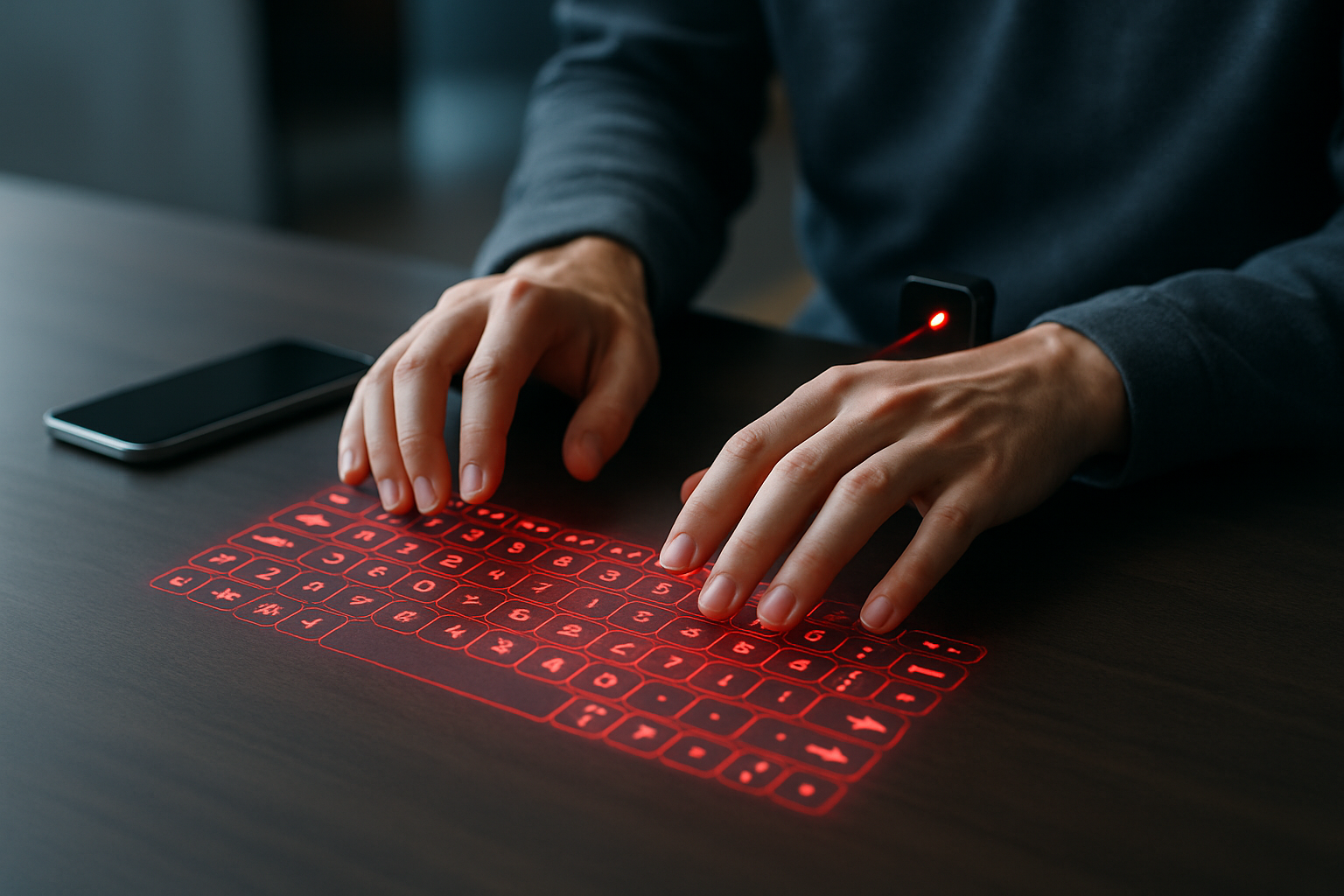Holographic Keyboards: Typing in Thin Air
In a world where technology continues to push the boundaries of what's possible, holographic keyboards are emerging as a fascinating blend of science fiction and reality. These futuristic input devices project a virtual keyboard onto any flat surface, allowing users to type without physical keys. As we dive into this cutting-edge technology, we'll explore its potential to revolutionize how we interact with our devices and the challenges it faces in becoming a mainstream input method.

This technology isn’t entirely new – it has been in development for over a decade. However, recent advancements in laser projection, motion tracking, and artificial intelligence have significantly improved its accuracy and responsiveness. The result is a more reliable and intuitive typing experience that’s beginning to catch the attention of tech enthusiasts and industry professionals alike.
Beyond the Novelty Factor
While holographic keyboards may seem like a gimmick at first glance, they offer several potential advantages over traditional input methods. For one, they’re incredibly portable. Without the need for physical hardware, a holographic keyboard can be integrated into smartphones or other small devices, effectively turning any flat surface into a full-sized typing area.
This portability factor could be a game-changer for mobile productivity. Imagine being able to type comfortably on a full-sized keyboard using just your phone, whether you’re on a crowded train or at a café. The technology also has promising applications in virtual and augmented reality environments, where physical keyboards are impractical or impossible to use.
Overcoming the Tactile Challenge
One of the biggest hurdles facing holographic keyboards is the lack of tactile feedback. Traditional keyboards provide physical resistance and auditory cues that help users type accurately and quickly. Without these sensory inputs, typing on a holographic keyboard can feel disorienting and lead to increased errors.
To address this issue, some companies are experimenting with haptic feedback systems. These systems use targeted vibrations or air puffs to simulate the feeling of pressing a key. While not perfect, these solutions show promise in bridging the gap between virtual and physical typing experiences.
The Market Landscape
Several companies are currently developing holographic keyboard technology, with products ranging from smartphone accessories to standalone devices. Prices for consumer-grade holographic keyboards typically range from $100 to $300, positioning them as premium peripherals rather than mainstream input devices.
The market impact of holographic keyboards remains to be seen. While the technology has generated buzz in tech circles, it has yet to achieve widespread adoption. However, as the technology improves and prices become more competitive, we could see holographic keyboards gain traction in niche markets such as mobile productivity and virtual reality applications.
Looking to the Future
As holographic keyboard technology continues to evolve, we can expect to see improvements in accuracy, responsiveness, and tactile feedback. Integration with AI and machine learning could lead to predictive typing and personalized layouts that adapt to individual users’ typing patterns.
The true potential of holographic keyboards may lie in their ability to transcend traditional input methods altogether. As we move towards more immersive computing environments, the line between physical and virtual interfaces will continue to blur. Holographic keyboards could be a stepping stone towards entirely new ways of interacting with our devices, paving the way for gesture-based inputs and brain-computer interfaces.
While holographic keyboards may not replace traditional keyboards overnight, they represent an exciting glimpse into the future of human-computer interaction. As the technology matures and finds its niche, we may soon find ourselves typing on thin air as naturally as we do on physical keys today.




